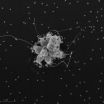(Press-News.org) Parents consistently overestimate their children's optimism and downplay their worries, according to new research by psychologists at the University of California, Davis, Center for Mind and Brain.
The findings suggest that secondhand evaluations by parents or other adults of children's emotional well-being need to be treated with caution.
Many psychologists and researchers have long held that children under the age of seven cannot accurately report how they feel, said Kristin Lagattuta, associate professor of psychology at UC Davis, who led the study. So behavioral scientists frequently rely on the impressions of parents, teachers and other adults.
However, several studies have shown that parents think their kids are smarter than they really are — for example, parents often overestimate how well their children will perform on math, language or other cognitive tests.
"We thought this 'positivity bias' also might apply to how parents perceive their children's emotional well-being," Lagattuta said.
Lagattuta, with Liat Sayfan, a postdoctoral researcher at the UC Davis Center for Mind and Brain, and Christi Bamford, a former graduate student at UC Davis, made the discovery while conducting larger studies on individual differences in children's social reasoning.
Rather than rely just on parent questionnaires, the researchers decided to assess kids' views of their own emotions.
They developed a picture-based rating scale that children could use to rate how often they felt different kinds of emotions. The team got the children used to the scale with basic questions such as how often they eat a particular food or wear clothes of a particular color.
In three separate studies involving more than 500 children ages 4 through 11, they found that parents consistently rated their children as being less worried and more optimistic than the children rated themselves.
The questions involved common childhood anxieties such as being scared of the dark, or worries about something bad happening to a family member.
Lagattuta and her colleagues also found that parents' own emotions biased not only how they perceived their children's emotions, but also the degree of discrepancy between the parent and child reports.
The fact that there was a difference between adults and children in rating both anxiety and optimism showed that there wasn't a simple effect of children giving themselves higher scores for everything, Lagattuta said. Instead, children consistently provided higher ratings than parents when reporting their worries and lower ratings than parents when evaluating their feelings of optimism.
Previous research with parents suffering from anxiety or depression have shown that parents' own emotions influence how they evaluate their children's feelings, Lagattuta added. The current findings show that this is a mainstream phenomenon not specific to adults with mood disorders.
The results do not invalidate previous work involving parent reports of children's emotions, Lagattuta said. But they do show that secondhand evaluations by parents or other adults need to be treated with care. Ideally, researchers should get emotion reports of children from multiple sources, including the child, Lagattuta said.
Awareness of this parental positivity bias may also encourage adults to be more attuned to emotional difficulties children may be facing, she noted.
###The findings are published in the Journal of Experimental Child Psychology.
Bamford is now at the Department of Psychology, Jacksonville University, Florida.
The work was supported by a grant from the National Science Foundation.
Parents look on the bright side of kids' worries
2012-10-24
ELSE PRESS RELEASES FROM THIS DATE:
Mining social media to discover vehicle defects
2012-10-24
Can social media postings by consumers be a source of useful information about vehicle safety and performance defects for automobile manufacturers?
Yes, say researchers at Virginia Tech's Pamplin College of Business, who conducted what is believed to be the first large-scale case study confirming the value of social media for vehicle quality management. The researchers developed a computer-based information system that provides auto manufacturers an efficient way to discover and classify vehicle defects.
"A lot of useful but hidden data on vehicle quality is embedded ...
Did bacteria spark evolution of multicellular life?
2012-10-24
Bacteria have a bad rap as agents of disease, but scientists are increasingly discovering their many benefits, such as maintaining a healthy gut.
A new study now suggests that bacteria may also have helped kick off one of the key events in evolution: the leap from one-celled organisms to many-celled organisms, a development that eventually led to all animals, including humans.
Published this month in the inaugural edition of the new online journal eLife, the study by University of California, Berkeley, and Harvard Medical School scientists involves choanoflagellates ...
JCI early table of contents for Oct. 24, 2012
2012-10-24
The missing "lnc" in human disease
LncRNAs (pronounced "link") are long non-coding RNAs that are emerging as important regulators of gene expression in biological processes and diseases. In this issue of the Journal of Clinical Investigation, two papers connect lncRNAs to inherited conditions in humans. Sylvia Bähring and colleagues at the Experimental and Clinical Research Center in Berlin found a chromosomal translocation that disrupts the expression of a lncRNA. This disruption alters the expression of the genes PTHLH and SOX9 and results in brachydactyly, an inherited ...
The missing 'lnc' in human disease
2012-10-24
LncRNAs (pronounced "link") are long non-coding RNAs that are emerging as important regulators of gene expression in biological processes and diseases. In this issue of the Journal of Clinical Investigation, two papers connect lncRNAs to inherited conditions in humans. Sylvia Bähring and colleagues at the Experimental and Clinical Research Center in Berlin found a chromosomal translocation that disrupts the expression of a lncRNA. This disruption alters the expression of the genes PTHLH and SOX9 and results in brachydactyly, an inherited malformation of the fingers and ...
Reaching the point of no return: Early intervention in a mouse model of obesity
2012-10-24
Obesity is a chronic metabolic disorder that affects half a billion people worldwide. Managing obesity is difficult, as many patients rebound to their pre-treatment weight. There is a hypothesis that chronic weight gain causes the body to adopt a state that supports excess weight. In a study published in the Journal of Clinical Investigation, researchers led by Malcolm Low at the University of Michigan challenged this hypothesis by developing a mouse model of obesity where the proopiomelanocortin (Pomc) gene in the hypothalamus can be turned on and off. With Pomc turned ...
84 million stars and counting
2012-10-24
Using a whopping nine-gigapixel image from the VISTA infrared survey telescope at ESO's Paranal Observatory, an international team of astronomers has created a catalogue of more than 84 million stars in the central parts of the Milky Way. This gigantic dataset contains more than ten times more stars than previous studies and is a major step forward for the understanding of our home galaxy. The image gives viewers an incredible, zoomable view of the central part of our galaxy. It is so large that, if printed with the resolution of a typical book, it would be 9 metres long ...
A 84-million star color-magnitude diagram of the Milky Way bulge
2012-10-24
Astronomy & Astrophysics published the first analysis of a catalog of 84 million individual stars in the Milky Way bulge as a part of the VVV ESO public survey. This gigantic data set allows building the largest, deepest, and most accurate color-magnitude diagram ever produced, containing more than ten times more stars than any previous study.
The bulge of the Milky Way is a large central concentration of ancient stars that is predominantly observed from the southern hemisphere. Understanding the formation and evolution of the bulge is fundamental for deciphering the ...
Herbal and dietary supplements can adversely affect prescribed drugs says extensive review
2012-10-24
A number of herbs and dietary supplements (HDS) can cause potentially harmful drug interactions, particularly among people receiving medication for problems with their central nervous or cardiovascular systems.
Those are the key findings of an extensive research review published in the November issue of IJCP, the International Journal of Clinical Practice.
Researchers examined 54 review articles and 31 original studies. They found that the greatest problems were caused by interactions between prescribed drugs and HDS that included ingredients such as St John's Wort, ...
Mouse model exposes a new type of T cell to target melanoma
2012-10-24
October 24, 2012, New York, NY – Cancers arise in the body all the time. Most are nipped in the bud by the immune response, not least by its T cells, which detect telltale molecular markers—or antigens—on cancer cells and destroy them before they grow into tumors. Cancer cells, for their part, evolve constantly to evade such assassination. Those that succeed become full-blown malignancies. Yet, given the right sort of help, the immune system can destroy even these entrenched tumors.
In the October 22nd issue of the Journal of Experimental Medicine, researchers led by ...
A new take on the Midas touch -- changing the color of gold
2012-10-24
Red gold, green gold – a ground-breaking initiative has found a way of changing the colour of the world's most iconic precious metal.
A University of Southampton team have discovered that by embossing tiny raised or indented patterns onto the metal's surface they can change the way it absorbs and reflects light – ensuring our eyes don't see it as 'golden' in colour at all.
The finding results from a major initiative funded by the Engineering and Physical Sciences Research Council (EPSRC) targeting the development of a new generation of nanotechnology-enabled materials. ...

